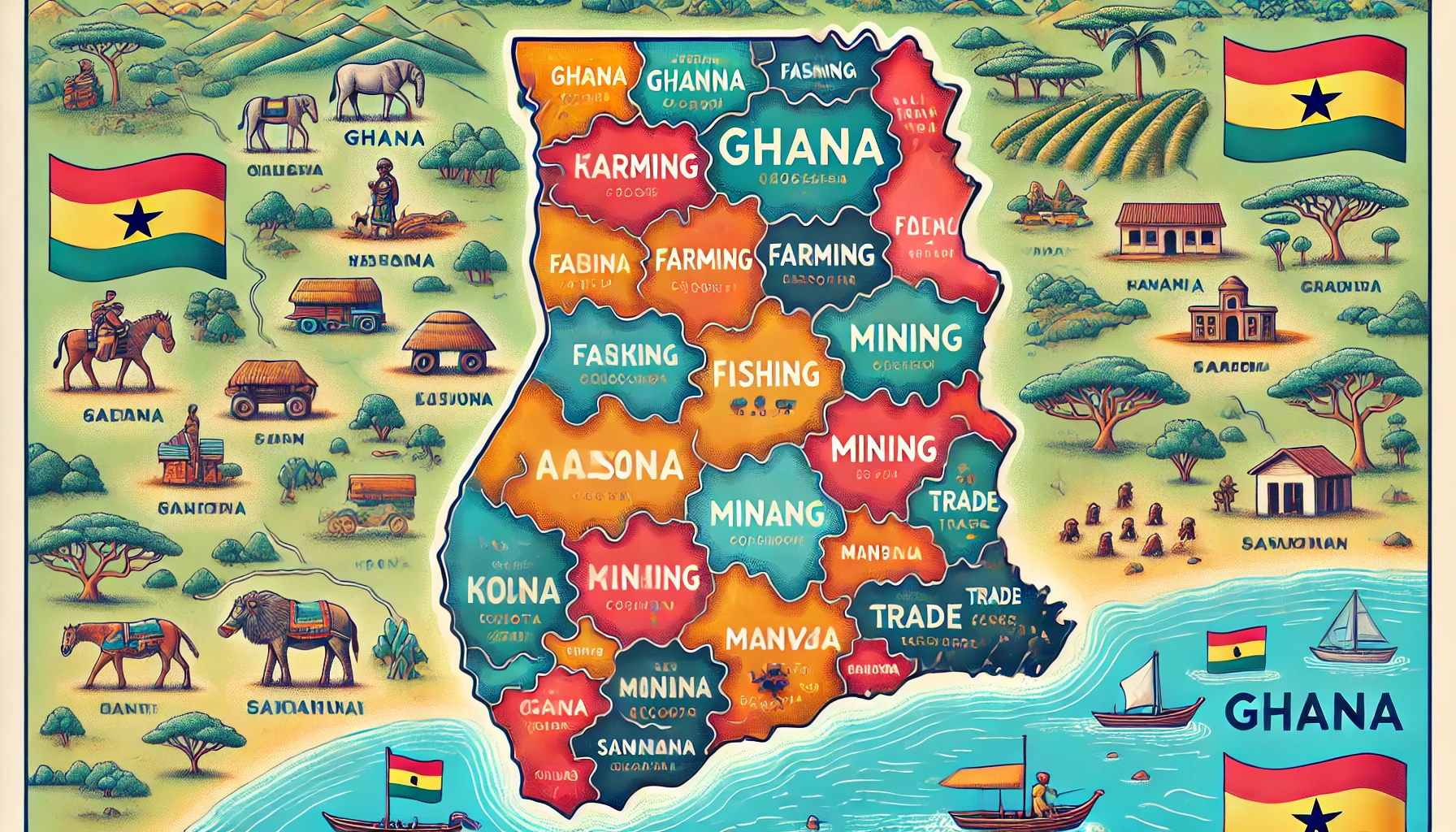146 Views
Major Occupations in Each of the 16 Regions in Ghana
Ghana is divided into 16 administrative regions, each varying in size, population, and predominant economic activities. Below is an overview of these regions, organised by area, along with their population figures and major occupations:
The major occupations in each of the 16 regions in Ghana, West Africa.
| Region | Area (km²) | Population (2021) | Major Occupations |
|---|---|---|---|
| Savannah | 35,862 | 653,266 | Agriculture (farming and livestock rearing), fishing, and small-scale trading. |
| Northern | 26,524 | 2,310,943 | Agriculture (yam, maize, rice cultivation), livestock farming, and trading. |
| Ashanti | 24,389 | 5,432,485 | Gold mining, cocoa production, and commerce. |
| Western | 23,921 | 2,057,225 | Mining (gold, bauxite), oil and gas production, rubber and coconut farming. |
| Bono East | 22,952 | 1,203,306 | Agriculture (cassava, yam, maize), fishing, and trading. |
| Volta | 20,570 | 1,649,523 | Agriculture (cassava, maize, rice), fishing, and crafts (kente weaving). |
| Eastern | 19,323 | 2,925,253 | Cocoa farming, mining (gold, diamond), and agriculture (plantain, cocoyam). |
| Upper West | 18,476 | 901,982 | Agriculture (millet, sorghum, groundnuts), livestock rearing, and shea butter processing. |
| North East | 9,072 | 658,934 | Agriculture (maize, rice, groundnuts), fishing, and trading. |
| Central | 9,826 | 2,201,863 | Fishing, agriculture (citrus, cocoa), and tourism. |
| Western North | 8,842 | 880,921 | Cocoa farming, timber production, and mining. |
| Upper East | 8,842 | 1,301,226 | Agriculture (millet, guinea corn, rice), livestock rearing, and basket weaving. |
| Oti | 11,066 | 747,227 | Agriculture (yam, cassava, maize), fishing, and trading. |
| Bono | 11,481 | 1,208,649 | Agriculture (cashew, cocoa, maize), and trading. |
| Ahafo | 5,193 | 564,668 | Agriculture (cocoa, plantain, maize), and timber production. |
| Greater Accra | 3,245 | 5,455,692 | Commerce, manufacturing, services, and fishing. |
Note: The population figures are based on the 2021 census data.
The major occupations listed are general trends and may vary within each region. For more detailed and updated information, consulting specific regional resources or the Ghana Statistical Service is highly recommended.

